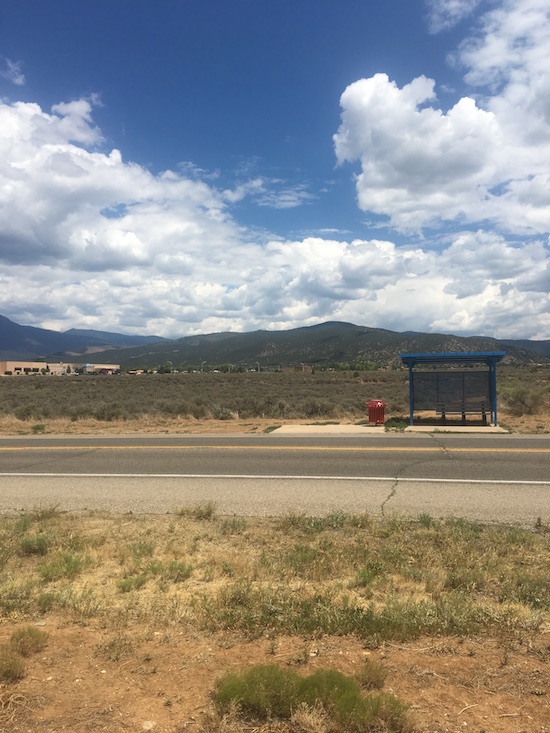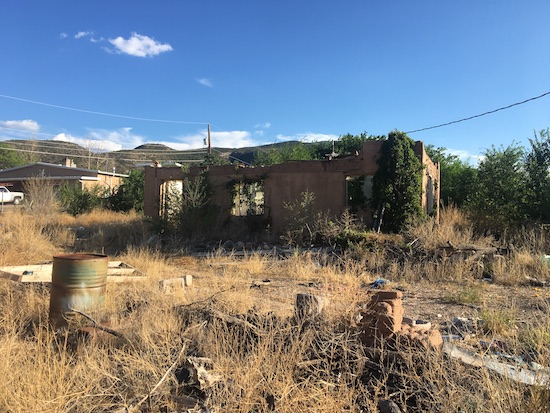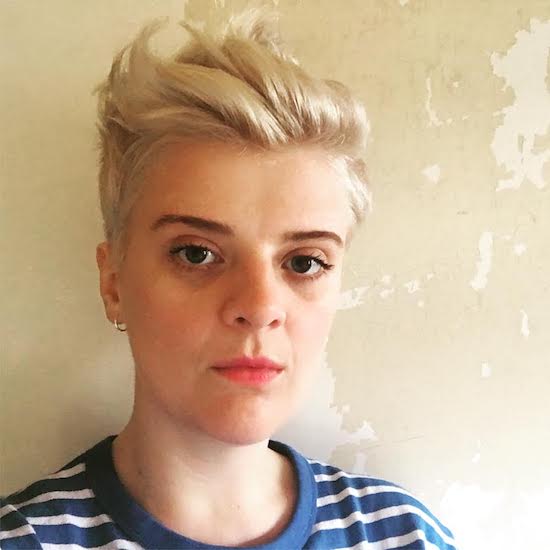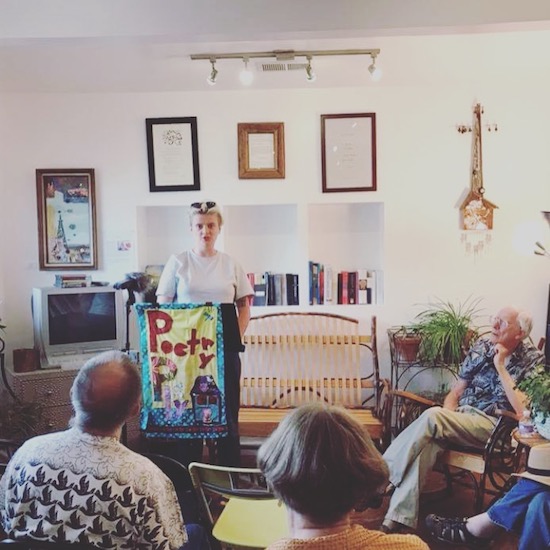All photos courtesy Jennifer Hodgson
The cult author Ann Quin still seems scandalously under-read and underloved, considering her unique voice as a working class, female, British, radical experimental writer. She lived with mental health problems and committed suicide in 1973 by walking into the sea by Brighton Palace Pier. She was only 37 and had published four books at that point (Berg (1964), Three (1966), Passages (1969) and Tripticks (1972) yet has still managed to leave behind an underground legacy of modern, anti-patriarchal, anti-bourgeois, proto-queer, peripatetic, progressive writing.
The Quietus celebrated Ann Quin’s work earlier this year by asking some contemporary authors what they find particularly special, or intersectional or non-conformist about her strange, honest writing. Those interviews marked the publication of a new collection of rare and unpublished writing, The Unmapped Country by And Other Stories, which chronicles some of her adventurous, nomadic life, working in scummy hotels, exploring polyamory and bisexuality, dabbling in therapy, getting knockbacks for arts funding . . .
Jennifer Hodgson, who edited and introduced The Unmapped Country, which covers pretty much Quin’s entire career, is appearing this week at the Edinburgh International Book Festival. She’ll speak about her attempts to resurrect the work of Ann Quin in an event called Giving Voice to Lost Authors.
Hodgson is currently researching a new book about Ann Quin’s life, and spent most of July in New Mexico, to follow the Ann Quin trail and begin making some notes. Claire Sawers caught up with her, during and briefly after her trip, to let her explain a bit more about what she wanted to get out of the semi-pilgrimage.

What’s the trip about?
Ha – good question. I think I knew what I was supposed to be doing here before I came, but now, as I type, I find myself alone in a seventies caravan on a mountainside six miles from Taos, New Mexico, with the emphatic neck tan of a retired Palm Springs golf enthusiast and I have less and less of an idea.
I have no idea how to write a biography. I mean, I’m not even sure what one is, but I know that one way that people go at it is to follow in their subject’s wake, to go to the places they went and through that try to commune with them in some way. Now, I have to admit, I find all of that a bit suspect. Whenever I’m in a place some eminent person, or a person I admire, has been, for sure I get a little charged feeling of proximity, but it’s a proximity that’s all about distance, about the impossibility of collapsing time and overlaying the scene with you in it with the scene with them in it. When I go to places with blue plaques, which I don’t very often, I find myself sort of morbidly more interested in what’s left of the person’s body than in traces of their consciousness, more interested in who the dust and the greasy smudges belong to.
Writing (and reading, and thinking, and being, for that matter) are such private, self-enclosed acts, I’m not sure how you extrude “real” flesh-and-blood people and places from any of them, and vice versa. But I think that might be what’s most interesting about the project. Quin was so concerned with trying to lay herself bare, trying to struggle out of her own skin and find a way to communicate directly, with all the difficulties of knowing other people and yourself – and any book about her life and work should reflect this most of all, I think.
So I came to New Mexico not so much to try to commune with Quin, but to commune with the same things she did. Her connection with this place has always amazed me, the idea that mid-way through the sixties she jacked in the secretary-ing and the London bedsits and upped sticks to reinvent herself as an American poet and maraud around the States. She rented a little house in the village of Placitas, nearish to Albuquerque for several years, but she travelled around a lot: to New York, San Francisco, Iowa, Maine, the Bahamas.

I visited the house the other day, I was in a kind of trespass-y mood, full of bravado, but there was an electric fence and two Dobermans guarding it – probably not for its blue plaque status. It’s a tiny little adobe bungalow. Adobe doesn’t look solid, somehow, like it’s been poured out rather than built, it’s like royal icing. Anyway, it’s a wreck now, there’s no roof and no windows and these shrubs crawling up the insides and through the windows and teeming out of the hole where the roof was. The plot is flytipped to shit, full of old sofas, fridges, chests of drawers.
I had no sense of what New Mexico actually was – I’d seen a single episode of Breaking Bad and had to switch it off part-way because I found it unbearably bleak. So I decided I’d come and see. She doesn’t write about New Mexico directly very much, but you can feel it in more oblique ways: in her attraction to merciless landscapes and arid climates and the sense of self-exile and alienation. Somehow those things have always done it for me too. I like the almost-but-not-quite intolerable heat here, it makes the air around you seem somehow solid, like you’re sort of gently encased. If you were looking for a place to escape your own skin and turn vaporous, I can see why you’d choose here.
In more practical terms, a few of her old pals and peers from that time are still around, still writing. Larry and Lenore Goodell, friends of Quin’s and very much the custodians of that scene, live just up the road from Quin’s old place. I wanted to meet them, and get a sense, in person, of what it was like to know Quin and to be here during that time.
I was quite adamant that this thing wasn’t going to have any of me in it, that after all these years it didn’t feel right to insert my own fairly unremarkable disconsolateness into this story – but I’m coming to realise, kind of reluctantly, now what a daft notion that was.
Do you have a route you’re following?
Well, I don’t drive, never learned, so this trip is kind of an exercise in constraint. Public transport is kind of minimal, and Uber often doesn’t reach out here, and if there are pavements at all, they’re often ornamental. So, I’ve found myself spending hours and hours walking along highways – friends I’ve met here think this is quite crazy, but I have to admit I rather enjoy it. I knew I wanted to spend time in Placitas, and I knew I had in the end to make it up to Santa Cruz, in Northern California, to interview Quin’s friend, the poet Robert Sward, who lives up there. I also wanted to go to Taos, where Quin stayed in the Lawrence Ranch when she was D.H. Lawrence fellow. I didn’t manage this last bit – first the area was closed because of forest fires and then the two Uber drivers who work the Taos beat seemed to be indisposed and it was a seven hour walk, and even I am not as dogged as all that.
In between those two points it’s been a bit, well, freeform. I went to Santa Fe, because it seemed like a kind of regional cultural centre, but when I got there, my impression of it was that it is the place where New Mexico shills a genteel version of itself to tourists – Pendleton blankets and misshaped linen mumus and extremely expensive cowboy boots, so I sacked that off and went to a sauna in the mountains (I’m sure I’m doing Santa Fe an incredible disservice here). I went to Las Vegas too, absolutely nothing whatever to do with Quin (I mean, probably), but I was an overnight bus ride away and I wanted to see it, since I was there.

What are you hoping for?
Just enough of a perspective shift to mess with me a bit, but not enough that I totally lose it, I think.
Ann Quin seemed like somehow who wrote obsessively, regardless of her day jobs etc. What’s your daily routine for writing and making notes, or do you have one?
Yes, I think that’s true. She writes about never being more productive than when she was working a day job and writing at night – but also about what that cost her, she ended up knackered and frayed. She often writes about needing what she calls “stillness”, which I think means a kind of self-enclosure.
I think she had that need with writing that a lot of people talk about – one that I don’t share at all. I don’t like writing very much at all most of the time – I’d much rather watch makeup tutorials on Youtube, or go for long, dogged walks along roads, or what have you. It’s something I sort of resent doing, a sort of compulsion, but not even a high-octane, exciting sort of compulsion, more of a dogged thing.
And it follows that I don’t have much of a daily routine, or, if I do, it amounts to acts of avoidance and subterfuge to try to force me into a chair to tap away at this computer. It works best if I start directly in the morning, on not enough sleep, before I realise what I’m doing. But then, when I’m at home I have a day job, which I find very useful – the solitude and the being forced back in on yourself of writing I find very difficult – I love having a place to go and bounded, comprehendible tasks to complete. Actually, I think I do all my best writing in the Notes app on my iPhone when I’m having a piss at work. There’s something I find very productive about stealing time back, about doing what you’re not meant to be doing, that’s no doubt indicative of something – but I’m not sure what.

Now you’re back in the UK, after the trip, what new perspectives do you have on Ann Quin?
I’ve found myself calling her "Ann" now rather than "Quin", which you’re absolutely definitely not supposed to do. I’ve just about laundered all my mumus. I now have this enormous toppling stack of papers, collection of pink volcanic rocks and casino chips just lying about waiting to be turned into a book. I’ve sent her pals Larry and Lenore a new teapot, since the one Ann got them in ’65 smashed at some point in between – and perhaps this is already an identification too far . . .
How’s the writing coming along?
Oh, absolutely terribly, as always.
Jennifer Hodgson appears at Edinburgh International Book Festival, Tuesday 21 August, 3.45pm


